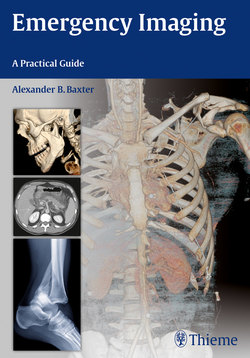Читать книгу Emergency Imaging - Alexander B. Baxter - Страница 65
На сайте Литреса книга снята с продажи.
Оглавление51
2Brain
is designated as compact. In diuse AVM a well-formed nidus is absent, and vessels traverse potentially eloquent brain.
It is dicult to detect small unruptured AVMs with noncontrast CT, and the radi-ologist should be sensitive to the subtle findings of asymmetrically enlarged feed-ing vessels and draining veins to do so. Up to 25% of AVMs have a calcified nidus, and this is sometimes the only NCCT finding. CT or MR angiography is useful for local-izing and determining the vascular supply of most AVMs, but comprehensive evalua-tion usually requires conventional catheter angiography, which can be performed in concert with therapeutic embolization.
Management depends on the anatomy, size, and location of the AVM. Options in-clude embolization, focused radiotherapy, surgical excision and combinations of these methods. In general, AVMs with superficial venous drainage have a better progno-sis than those with deep venous drainage (Fig. 2.20).
◆Arteriovenous Malformation
Arteriovenous malformations (AVMs) are developmental anomalies consisting of abnormal arteries and veins without in-tervening capillaries. They appear as a complex tangle of small vessels, the nidus, with enlarged feeding arteries and drain-ing veins. High-flow, rapid arteriovenous shunting is a physiologic feature, and most AVMs are presumed to enlarge over time. In an individual, an AVM may remain static, grow, or even regress, but the annual risk of hemorrhage for an untreated AVM is ap-proximately 3%, is cumulative, and increas-es with age. They are typically solitary, and if a patient has more than one, syndromes associated with vascular malformations, such as Wyburn-Mason and Osler-Weber-Rendu (hereditary hemorrhagic telangiec-tasia), should be considered.
Most AVMs are supratentorial and can be classified as either compact or diuse with respect to the nidus of anomalous vessels. If the nidus is small and contains little if any interposed neuronal tissue, it
Fig. 2.20a–f a,b Incidentally detected arteriovenous malformation. (a) NCCT. Focal hyperdensity along the anterior margin of the right anterior temporal lobe with subtle tubular elements. (b) T2WI. A small tangle of vas-cular ow voids in the right anteromedial temporal lobe is supplied by dilated feeding arteries arising from the middle cerebral artery and drained by a large subtemporal cortical vein that courses along the oor of the middle cranial fossa.
c–f Ruptured arteriovenous malformation. (c) NCCT. Right frontal parenchymal hemorrhage with intra-ventricular and subarachnoid extension. (d–f) CT and conventional angiograms. Small nidus of enlarged vessels at the posterolateral aspect of the hematoma along the dorsal aspect of the thalamus.
